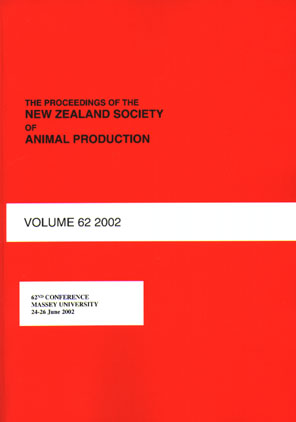Abstract
On each of four farms, groups of ewes were either not dipped, dipped once or dipped twice with zinc sulphate solution (20 g/l). Base and challenge yellowness were determined on core wool samples collected at shearing. Dipping with zinc sulphate increased the zinc concentration of wool at shearing from 154 (range 77-321) to 421 (range 116- 1140) (dipped once) or 806 (range 143-1920) mg/kg (dipped twice). Zinc sulphate dipping had no effect on the base yellowness of wool on three farms, but significantly reduced wool base yellowness on the fourth farm (Tristimulus (Y- Z) = 9.0 vs. 7.8 vs. 8.5 for control, dipped once and dipped twice, respectively) (P<0.01). In the laboratory, wool samples from all farms were significantly less yellow after challenge when sprayed before challenge with zinc sulphate solution than when sprayed with water (9.9 vs. 10.9; 7.1 vs. 10.0; 8.3 vs. 10.6; 11.3 vs. 13.1) (P<0.001). There was a significant relationship (R2 = 83.4%, P<0.001) between the changes in zinc concentration resulting from zinc dipping and the changes in yellowness of the wool with challenge. These results indicate that dipping sheep with zinc may reduce discoloration of greasy wool at shearing under environmental conditions in which yellowing is maximised.
Proceedings of the New Zealand Society of Animal Production, Volume 63, Queenstown, 164-168, 2003
| Download Full PDF | BibTEX Citation | Endnote Citation | Search the Proceedings |

This work is licensed under a Creative Commons Attribution-NonCommercial-NoDerivatives 4.0 International License.

